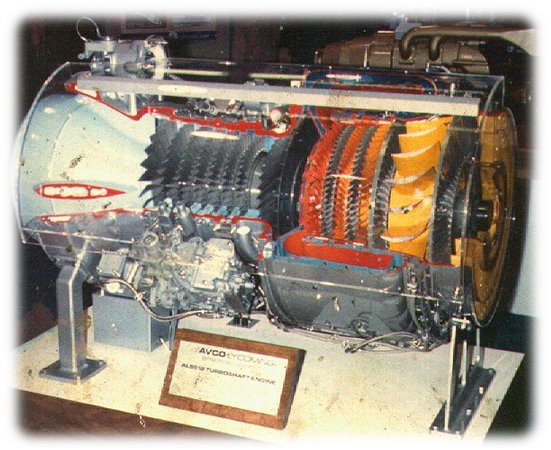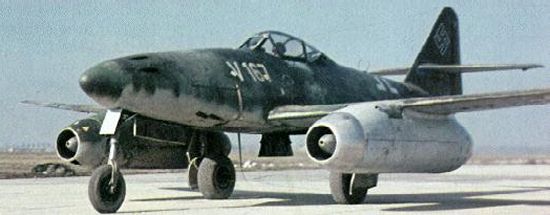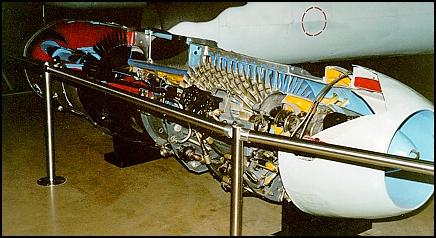(Now Honeywell's)
The AL5512
Commercial Variant of the T55 L-712

Photo by Robert Reed
The Lycoming T55 and other engines of the Third Reich's Dr. Anselm Franz
The 4435
horsepower Avco
Lycoming AL5512 is a commercial variant of the T55-L712 Boeing
Chinook CH-47D helicopter engine. This powerful engine
only weighs 830 lbs. It powers Columbia
Helicopters'
Boeing
234 heavy lift helicopters capable of 28,000 lb
lifts. Columbia bought the
entire world fleet of 234's, a total of 10
helicopters. They were my main customer as a tech rep for this
engine model. This masterpiece of
engineering from 1955 was the brainchild of
Germany's Third Reich turbine engine scientist Dr. Anselm Franz.
Dr. Franz developed
the famed Junkers
Jumo
004
turbojet engine for the Messersmitt ME262 jet of WWII. He created
the Gas Turbine Division
of Lycoming where I worked for 9 years. He
retired in 1968 as a vice president of Avco Lycoming and
consulted for them up to about the time I started
working
for them. Dr. Franz developed the AGT1500
gas turbine tank engine for the M1 Abrams Tank, our main battle tank
today. He was considered the "Werner Von Braun" of
the gas turbine engine. In the 1930's Dr Franz
developed hydraulic torque converter technology and much
of the turbocharger technology used in this day and
age.


Above is the The Luftwaffe's Messersmitt ME 262 powered by two Junkers Jumo 004
turbojets designed by Dr. Anselm Franz during World War II in Germany. Below is a
cutaway of the Jumo 004 turbojet gas turbine. The ME 262 was the world's first
operational turbojet powered combat fighter.
When I went to work for Lycoming in 1983, I didn't know about the heritage of the Lycoming gas turbine engine product line. Customer relation difficulties caused by horrific teething problems of the LT101 gas turbine engine were in need of fixing up. The 101 was a different animal from the other rock steady Lycoming gas turbines. Things are greatly improved now with the LT101 as of 2011, but then it was a different story.
No support structure was in place for the troubled engine. That engine powered the U.S. Coast Guard Dolphin which was just beginning preparations to go into active service. Already in service were the Bell 222, Messersmitt Boelkow BK117 and the Aerospatiale (now Eurocopter) AS350D. Over the years some improvements were made. We got more reps, put in some hard work, took a few knock downs and a few corporate aquisitions.
The engine got help with some good corporate and engineering level decision making many years after I left Lycoming. It now has become an engine with good economy of operation numbers.
The T55, T53 and AL5512 were different stories. They were the "Rocks of Gibralters" of the product line.
I was factory trained on the T55, AL5512 and T53 gas turbines and worked with their customers. These were mature engines and the issues usually involved help in making expensive decisions and additional opinions during inspections. Faith in the engines was strong although some confidence was shaken with operators of the T5508D in the Bell 214. Logging operators took a toll on cycle life and hour limitations on the gas producer and power turbine components.
A little while back I was browsing through online PDF documents of Lycoming documentation. I found a Lycoming newsletter dated 1963 that had about 3 people listed as tech reps who I worked with after they became service engineers. In the eighties those guys and others were parts of the history of gas turbine technology. I remember them telling me they were working for Lycoming in the fifties. They got to cut their teeth on the great creations of Dr. Franz during the growth years of the engines. Later Dr Franz and his engineers came up with the M1 Abrams tank engine, the AGT 1500 triple spool gas turbine. I'm priviledged to have served with these people.
Robert Reed
BACK to the TM page
BACK to the Main Page